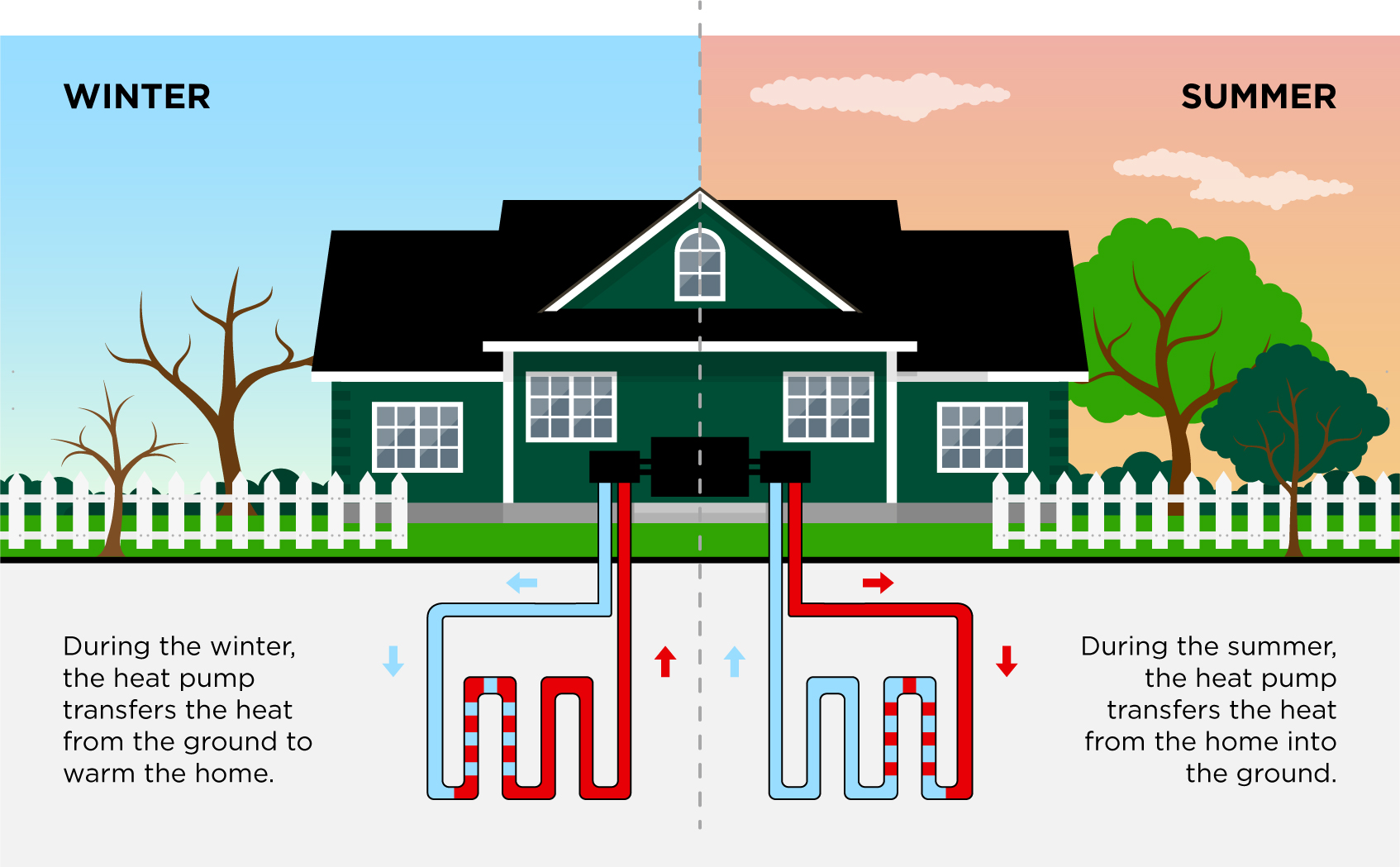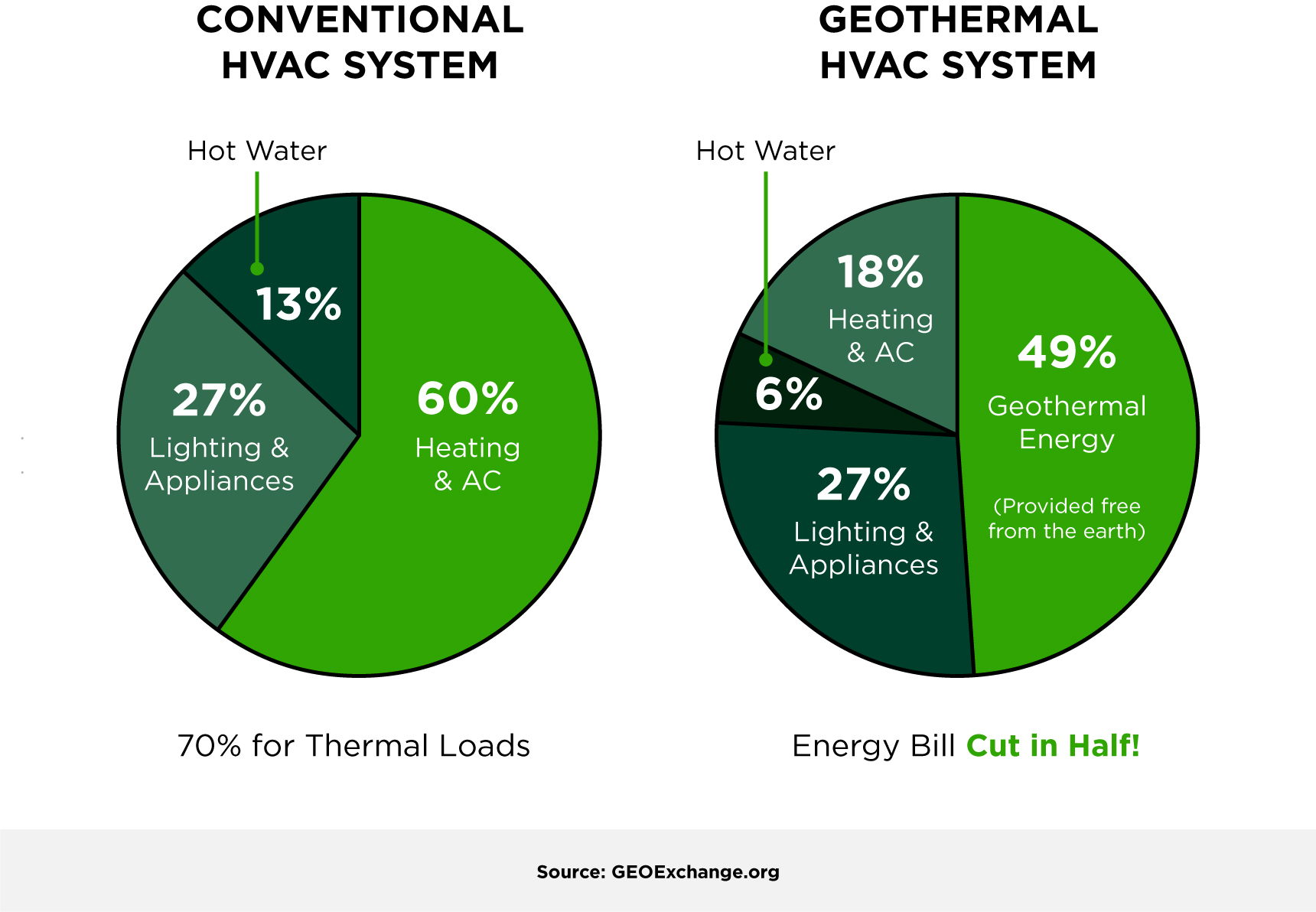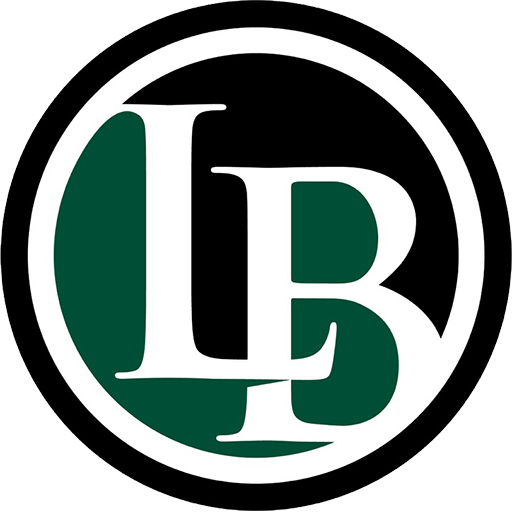For Clean and Green Comfort, Choose Lancaster Brothers’ Geothermal Systems and Repairs
Geothermal units, expertly installed and maintained by our highly trained team, offer the most durable, cost-efficient, and eco-friendly air comfort experience on the market.
New WaterFurnace geothermal heating and cooling systems are the leading choice for cleaner, greener whole-home temperature control. Made in the Midwest, these advanced systems are known for their precise engineering and tight quality standards, which significantly reduce homeowner maintenance costs and give these units an unbeatable 25-year lifespan.

Watch Your Savings Stack Up with These Built-In Geothermal Tax Benefits
While the upfront cost of installing a geothermal system may be higher than putting in a traditional HVAC unit, your long-term energy and maintenance savings potential is unmatched. Homeowners who transition to geothermal energy with a system installed and maintained by Lancaster Brothers see a dramatic decrease in their monthly energy bills—often up to 70%.
With attractive tax credits now available, making the switch to geothermal heating and cooling is more affordable than ever, saving homeowners an average of $129 every month and reducing energy usage by as much as 44%.

Need Another Reason to Go Geo with Lancaster Brothers?
Our fully customizable geothermal installations and affordable maintenance services meet your home and family’s unique energy needs. Whether you choose a highly efficient backyard horizontal-loop system or an economical open-loop system that leverages the cooling power of groundwater, every unit we install is designed to optimize your comfort and maximize your savings.
Each installation and maintenance service we complete is backed by years of advanced training through WaterFurnace’s comprehensive courses, so you can enjoy peak system performance and total peace of mind for years to come.
Here’s why our Kansas City area customers choose a geothermal system installed and maintained by our expert team:
Enhanced Comfort Throughout the Year
Geothermal systems use the stable underground temperature to provide cool air in the summer and whole-home warmth in the winter. These systems are able to maintain consistent heating and cooling much better than traditional HVAC units, which are impacted by ambient air temperatures. In both cold snaps and heat waves, no solution maintains your home’s cozy warmth or refreshing cool like our geothermal units.
Eco-Friendly Energy Usage
By tapping into the earth’s natural baseline temperature, geothermal heating and cooling systems significantly reduce your reliance on gas or electricity—decreasing your fossil fuel usage, shrinking your carbon footprint, and cutting your energy bills. Compared to the average HVAC or furnace, geothermal systems are the most environmentally friendly and climate-responsible choice homeowners can make.
Tax-Optimizing and Cost-Effective Maintenance and Longevity
Homeowners in the Greater Kansas City area can claim a 30% federal tax credit for geothermal installations completed before the end of 2032, and there are additional credits and rebates available across the area through some energy providers. These substantial incentives, combined with a typical savings of up to 70% on monthly energy bills, make geothermal systems a smart and long-lasting home investment.
Exceptional Service at a Great Value
Whether you’re looking for a geothermal installer or routine geothermal system maintenance, our team provides exceptional service long after our work is complete. Our advanced training, two decades of experience serving Greater Kansas City, and our top-quality parts and materials give you the best in geothermal performance. And with special offers available, you can enjoy our premium service at a price you can afford.
Geothermal Makes Comfort Consistent for Kansas City Area Homeowners
With fewer mechanical parts than traditional heating and cooling systems, high-efficiency geothermal units require less maintenance throughout their long lifespan. And with the potential to generate a 10-20% return on investment in saved energy and maintenance costs, geothermal energy is the only heating and cooling solution that pays you back.
For whole-home comfort that’s endorsed by the US Department of Energy and EnergyStar, and is backed by our five-star installation and maintenance experience, choose geothermal—and tap into the power of your backyard.
Call Lancaster Brothers for Durable Home Comfort Systems and Reliable Repair Services
At Lancaster Brothers, we proudly empower homeowners to save more, cool faster, and reduce their carbon footprint by tapping into the free renewable solar energy stored right below their feet. We’ve spent the past decade training and installing these high-efficiency and long-lasting systems—and delivering unmatched savings in the process.
Ready to upgrade your home with geothermal energy? Use the form below to contact us and learn more about our services or check out our special offers to enhance your savings.
